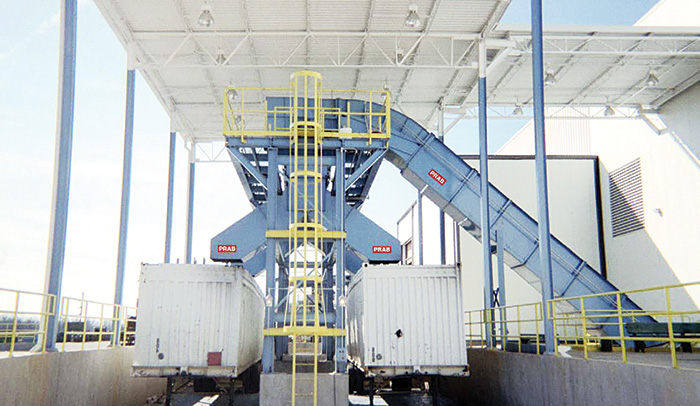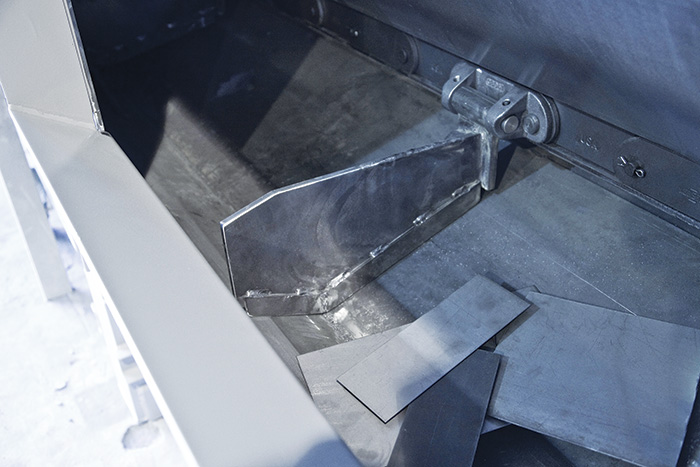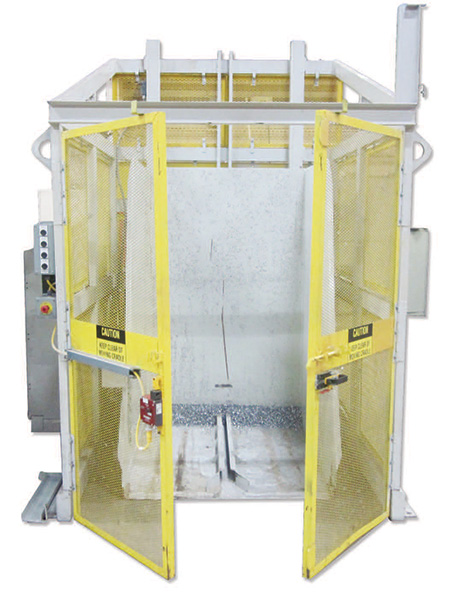As labor shortages persist, preventing injuries, maximizing operator use, and promoting uptime will be essential to efficient and profitable processing. Adding or upgrading material handling equipment is an apt place to start.
By Mike Hook
Amid times of workforce challenges, it is imperative for companies to adopt automated scrap recycling solutions that reduce manual labor and prioritize worker safety. As labor shortages persist, preventing injuries, maximizing operator use, and promoting uptime will be essential to efficient and profitable processing. Adding or upgrading material handling equipment is an apt place to start. With that in mind, here are three ways automated material handling solutions help reduce workforce challenges.
#1: Automated Material Handling Equipment Inherently Improves Efficiency and Increases Productivity
Any recycling process that is completed more efficiently allows for valuable resources to be used in other areas of the operation. Conveyors, for example, are proven to raise productivity up to 60 percent. Compared to manual transfer processes, they move metal scrap more quickly and consistently to help support continuous processing. Additionally, systems that automate load-out processes not only save time and labor, but they also optimize container fill. These systems can include automatic level sensors that provide visual alerts when the container is full, integral scales that verify containers are not exceeding road weight limits, and automatic notifications sent directly to the scrap haulers when a pickup is necessary.

#2: Metal Scrap Recycling Facilities that Leverage Automated Material Handling Equipment Improve Workplace Safety
With approximately 250,000 people injured per year due to a fall in the workplace, it is no surprise that OSHA regulations require employers to have clean, dry floors. Large piles of metal scrap coated in cutting fluids put operators at risk for trips, slips, and falls. Lifting heavy items and forklift accidents are other leading causes of workplace injuries.
Dumpers, conveyors, and load-out systems that automate the transfer of metal scrap are shown to improve workplace safety up to 25 percent. They promote ergonomic processing, reduce forklift traffic, and help keep operators a safe distance away from shredding, crushing, and melting equipment.
Pre-conditioning metal scrap to ensure downstream equipment can process the material will also prevent hazardous working conditions. For example, augers and steel belts sometimes fail to consistently move bushy bundles of metal scrap because they are unable to grab hold of stringy wads of material. Instead, the bundles bounce around the in-feed hopper—usually until an operator manually breaks them up or forces them up the conveyor. This practice is incredibly unsafe.
Additionally, when equipment is not performing optimally, employees may become frustrated and dissatisfied with their job. Adding equipment that tears stringy wads of chips, turnings, and bundles apart prior to the auger or steel belt conveyor will help minimize the need for operator intervention altogether.

#3: Material Handling Solutions Can Be Engineered to Reduce Maintenance
Labor shortages do not only affect in-house staffing capabilities—they also impact third-party contractors, such as equipment technicians. Whether your operation enlists the services of a technician to perform preventative maintenance or mission-critical repairs, service may be delayed due to a lack of available resources. Fortunately, certain design features of material handling equipment can help prevent downtime related to maintenance.
Build Quality
Heavy-duty, abrasion-resistant construction materials and high-quality welds are critical to meeting the high-volume demand typical of metal scrap recycling operations. Design features that provide reinforcement and/or reduce impact, such as special supports and belt-reinforcing impact plates, help extend a conveyor’s service life and maximize uptime.

Simplified Maintenance
Belt maintenance and bearing lubrication are aspects of routine conveyor maintenance that can be minimized through automated solutions. Auto lube systems that automatically grease bearings improve bearing performance and eliminate maintenance required for manual greasing. To eliminate manual belt adjustments and the issues associated with stretched belts, an auto-take up system can be designed into the conveyor. This feature automatically monitors tension using load cells on chain conveyors and tightens the belt to eliminate manual adjustments and downtime. These systems can be added to new conveyors or retrofitted onto existing models. Automatic adjustments can be scheduled to be completed during low production times or shift changes.
Carryover Prevention
Above all, avoid carryover that may damage conveyor equipment by using a conveyor designed to provide a positive discharge of material. For instance, some scrap conveyors eliminate carryover by using a drag flight to pull material toward the discharge point. When the flights pivot out of the way, stuck materials dislodge from the machine.

A Safer Workplace
It is projected that industrial operations will continue to face labor shortages as the workforce ages. Managing turnover is also a challenge. According to a report from Tooling U-SME, 43 percent of companies report an average of at least 20 percent annual turnover that costs them hundreds of thousands—if not millions—of dollars annually.
Compensation and safe working conditions are table stakes. Today’s employees have higher aspirations for their work experiences. In a poll conducted by the U.S. Chamber of Commerce, 41 percent of respondents indicated that prospective employees are looking for a positive work environment. The U.S. Department of Labor’s Occupational Safety and Health Administration reports that good housekeeping in the workplace not only creates a cleaner, safer workplace, but also promotes positive behaviors, habits, and attitudes. In this way, conveyors and other material handling solutions also can impact employees’ perceptions about their jobs. Improved housekeeping achieved through effective management of metal scrap helps make the working environment feel tidy and orderly, which can contribute to a more favorable view of work overall. | WA
Mike Hook is the Sales and Marketing Director for PRAB and has more than 20 years of mechanical design and application experience. PRAB is a leading engineer and manufacturer of conveyors, chip and fluid management systems, and industrial water and wastewater treatment equipment. PRAB’s customized solutions automate metal handling, reduce labor costs, reclaim and recycle expensive cutting fluids/coolants, and maximize returns on recycling metals. PRAB’s expertise is honed by more than 4,500 installations for the world’s leading OEMs and suppliers. The company is dedicated to continuously improving material handling, housekeeping, and compliance to environmental rules and regulations within the automotive, aerospace, medical, electronics, defense, off-road, and energy markets. For more information, visit prab.com.
